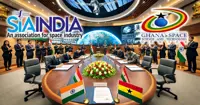Marketbaggers and marketcrashers
01 Nov 2006
How do we make new products succeed in the market; how do we ensure that it is relevant to Indian conditions and the Indian reality? Strategic consultant S Ramachander takes a look.
The first order of any business, it is said, is to stay in business. Nothing assures the survival of a business better than successfully launching new products and variants at regular intervals. Innovation is now on the top of the agenda of nearly every CEO everywhere. A sharp focus on new products helps in many ways; it is the proven method of gaining competitive advantage. Not only does it keep the company in the limelight, it helps to stave off competitive pressures and raiders, to keep growing and to make up for declining brands.
Then why do so many new ideas, which sound so impressive when first presented, then successfully weather a rigorous market testing mechanism, still fall flat on their faces when they are actually released in the in the market place? New evidence from the US suggests that the average success rate of new products — after rigorous market testing and a national launch — is closer to 40 per cent nowadays. This means that three new products out of every five are potential disasters.
When I hear marketers vent their frustration about struggling to sell a new service or a tangible product that contains a 'breakthrough' concept, I am reminded of a not-so-original joke: A middle-American couple is trekking in the wilds of Kaziranga, and suddenly comes up against a full-grown rhinoceros, feeding. The woman wants to run but her husband says, "Listen honey, it won't attack us. Didn't you hear the guide tell us the rhino is a vegetarian?" "Yes," she replies, "We know the it is a vegetarian, the guide knows it is a vegetarian but does the rhino know it is a vegetarian?"
That brilliant new product idea, which seemed too good to be true when seen in the laboratory or conference room, which looked just right for the market, which tested so well, which was so rigorously researched, just failed to take off. The consumer, rather like the rhino, did not seem to realise what seemed so obvious to the experts!
All
innovation passes through the funnel of selection, from
testing the idea, developing a prototype, testing it and
then examining the business plan based on a forecast volume
and price. Despite it all, there are expensive failed-product
skeletons in every company's closet, even the very best;
haven't we all heard of New Coke, Sony Betamax or the
Ford Edsel?
The well-known 'Diffusion of Innovation' model by Everett
Rogers estimates that roughly 2.5 per cent of the target
population normally comprise the adventurous few who will
try anything new first. Little original research has been
conducted in the developing country context for the simple
reason that most 'new' goods are usually direct imports
of product designs and developments that have already
been established in advanced countries.
Our job, it appears therefore, is to merely adapt such new technologies and develop a customer preference for our particular brands in the Indian market. The story has been the same from the fountain pen and the transistor radio in the 20th Century, right down to the mobile phone, the digital camera, the credit card, and the iPod today.
One must obviously look for a different set of reasons for the success of altogether new technologies (like the ATM, the credit card and the mobile phone) as opposed to new products in an existing category. A new technology catches on like wildfire when the consumer value is clear and easy to access. One can generalise that any device that delivers a new convenience hitherto undreamt of, has a huge opportunity if it is relevant to Indian conditions and the Indian reality.
That last phrase is very significant and, most often, is the source of all problems. For any new idea to succeed in our economy, it has to break through the initial outlay barrier. A large majority of our population lives on meagre incomes, so that even a relatively inexpensive product in Western eyes becomes completely unaffordable here.
This is where one must remind oneself of the purchasing power parity (PPP) notion. A dollar may be worth Rs45 on the currency exchange, but 45 rupees buys a good deal more (perhaps even a whole day's food for a working class family) than a dollar ever would in its home country. It is far more practical to treat the dollar as worth only five to six times more than the rupee.
Therefore, anything that sells for around $100 in America or Europe will fetch nowhere near the Rs4,500 it is theoretically worth in India. Conversely, Rs4,500 can buy you a great deal more in India than its dollar equivalent can in the US or Europe. To come back to pricing, the source of the demand will either be very large or highly restricted, depending on how good the match is with the real purchasing power of the rupee.
In India, there have been many examples of products markets that were grossly over estimated, going years back to dehydrated foods under the Hima brand launched by the country's top food marketer Hindustan Lever, or the noodles and instant tea brands launched by Lipton. Other MNC big names such as Mercedes Benz, Nestle, Horlicks, Johnson & Johnson, and Maxwell House have suffered embarrassing failures. Some have had to withdraw brands altogether, after launching them nationally with so much fanfare.
Product acceptance in developing markets such as India, Indonesia and China is peculiarly long and slow. The potential of this apparently vast market, therefore, is not immediately accessible to most marketers. The latest buzzword in Western thought, the 'long tail', is something Indian marketers know very well.
It is said that many products in India are in a perpetual state of launch. The population is so vast and diverse, with such a wide range in purchasing power, that even today there must be some people in the remotest corners of the country who are testing out their first ever bicycle, wrist watch or audio cassette player.
Let us not forget that nearly all branded products (with the exception of watches, bicycles, washing soap, packet tea and so on) define their total universe of consumers as the top half of the population. The penetration of truly high value items such as air conditioners and motorcycles is still well short of 30 per cent of the households in India — skewed almost totally in favour of the urban population.
Very few marketers have the financial and organisational stamina required to wait it out for this slow build up of acceptance to fructify. Far too many of them make facile over simplifications about Indian consumers' tastes. Not everything that is all the rage in America does well on retail shelves here. Cult products such as jeans and music are limited to a small, affluent young group, mostly from large towns and metropolitan cities.
But—and let us not ever forget this — what makes one overlook relative size and small market shares is that from the western manufacturer's perspective, even 10 per cent of a billion-strong people is nearly twice as large as the entire population of the UK or Germany in absolute numbers. The real answer to this must lie in a sharper and more insightful understanding of the real potential consumer. One must not be taken in by generalisations or the media hype one sees so often in Western media.
Yes, the India story is strong and it is the flavour of the year so far on all the bourses, but that still does not make it an automatic choice as the next big market to expand into after, say, Western Europe. On the other hand, marketers should do well to accept that the internal inconsistency and variability of the Indian market is greater than in the entire continent of Europe. For every generalisation about India, we must remember, the diametrical opposite might well be equally true!




.webp)

.webp)

.webp)






















